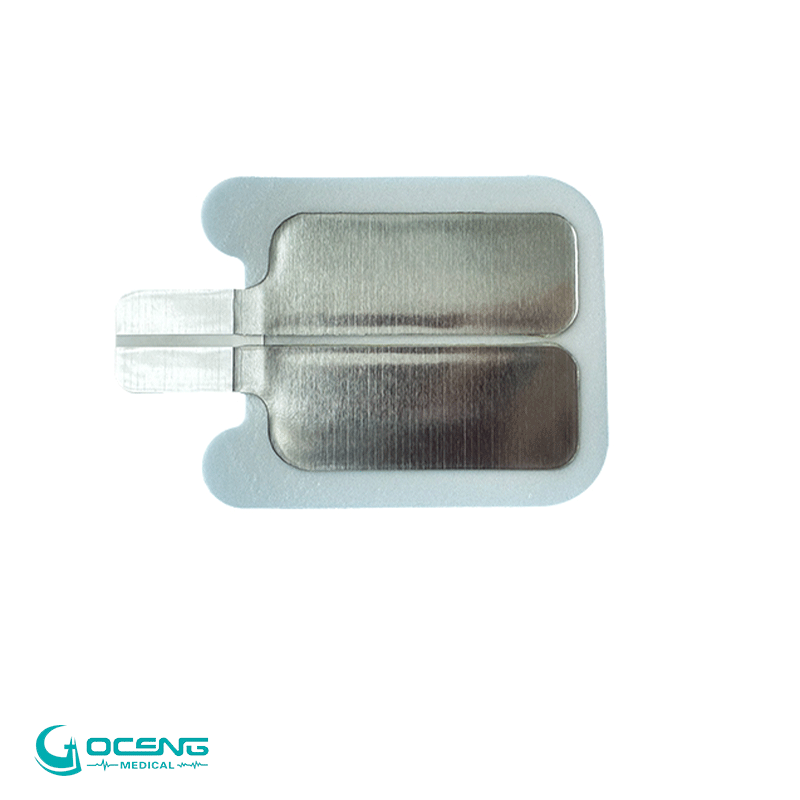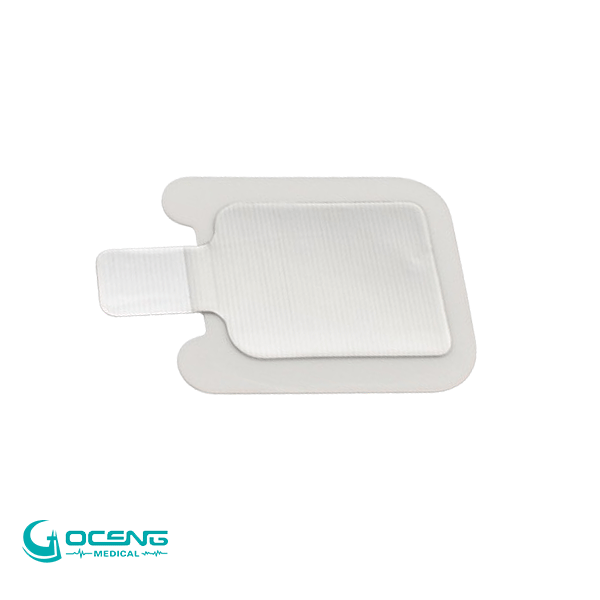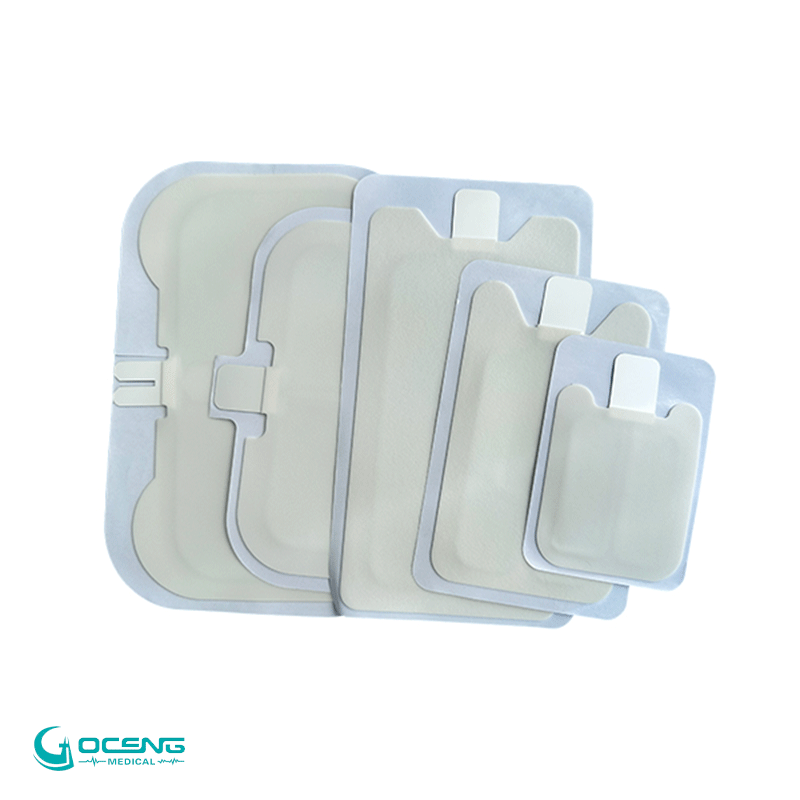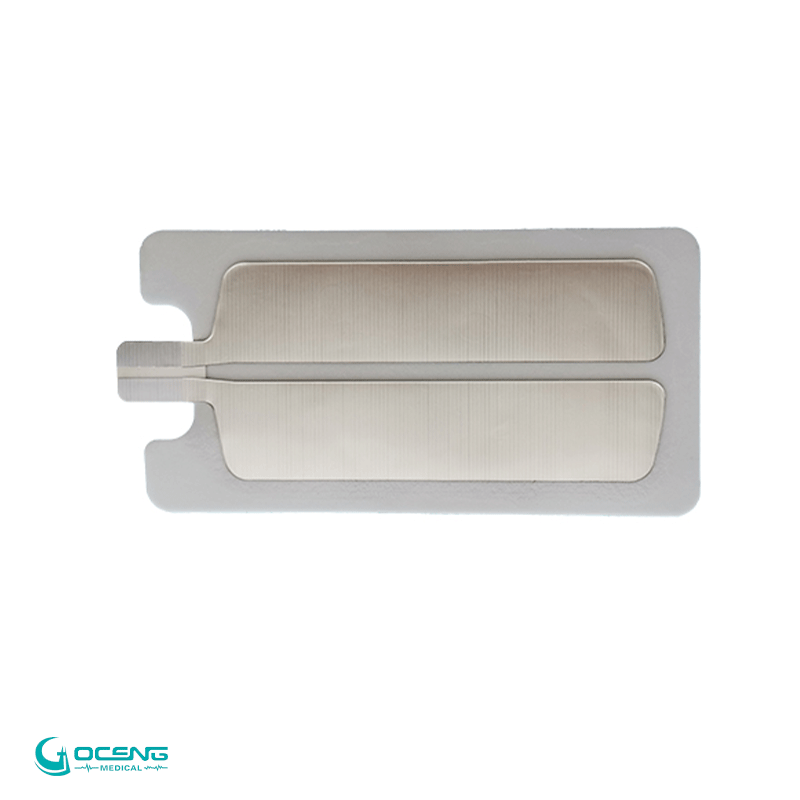Product Specification
|
Model No.
|
GECG-005
|
|
Sizes
|
55MM 50MM
|
|
Backing
|
Foam/Non-woven
|
|
Snap
|
3.9MM carbon snap
|
|
Gel
|
Solid Gel |
|
Liner
|
0.1mm PET
|
|
Color
|
White
|
|
Packing
|
1pc/film, 50pcs/bag ,2000pcs/ctn, 32*26*32CM, GW:3.5KG
|
|
Report
|
ROHS/Bio-compatibility report
|
|
Certificate
|
CE/ISO13485/FDA
|
Product Detail
-
Material:
- Conductive Element: Carbon-based material, often designed as a conductive polymer layer, instead of silver or silver chloride (Ag/AgCl), which is more commonly used in ECG electrodes.
- Adhesive: Skin-friendly adhesive that ensures good contact with the skin and provides a secure fit.
- Backing: Usually made from foam or cloth, allowing flexibility and comfort during long-term use.
- Snap Connector: A "snap" connection at the center that connects easily to standard ECG lead wires, enabling efficient setup and removal.
-
- Design:
- Shape: Round or rectangular, typically small and designed to adhere comfortably to the skin.
- Disposable: Most carbon ECG electrodes are single-use, disposable devices, reducing the risk of cross-contamination.
- Size: Typically comes in different sizes to accommodate various patient types (e.g., pediatric, adult).
- Conductivity:
- Carbon has good conductivity but may not perform as well as Ag/AgCl in high-sensitivity applications, though it’s suitable for most routine ECG tests.
-
Packaging:
- Sold in bulk (boxes or rolls) to facilitate easy access in clinical environments.
Product Application
-
Proper Skin Preparation:
- Clean Skin: Before placing the electrodes, ensure that the skin is clean, dry, and free from oils, lotions, or dirt, which can interfere with conductivity and adhesion.
- Hair Removal: In areas with excessive hair, it may be necessary to shave or trim the area to ensure good contact between the electrode and the skin.
-
Avoid Use on Broken Skin:
- Do not apply electrodes to damaged, irritated, or broken skin, as this can cause further irritation or lead to inaccurate readings.
-
Check Adhesion Regularly:
- For long-term monitoring, periodically check the electrodes to ensure they are securely attached. Poor adhesion can lead to false readings or signal loss.
-
Avoid Reusing Disposable Electrodes:
- Even though carbon electrodes are durable, disposable types are designed for one-time use only. Reusing electrodes can compromise hygiene and the accuracy of the ECG.
-
Monitor for Allergic Reactions:
- While carbon electrodes reduce the risk of metal allergies, it’s still important to monitor the patient for any allergic reactions to the adhesive or materials used in the electrode.
-
Storage:
- Store the electrodes in a cool, dry place, away from heat and moisture, which can affect their adhesive properties and overall functionality. Ensure the packaging is sealed until use to maintain sterility.
-
Ensure Proper Lead Connection:
- When attaching the snap connectors, ensure they are securely fastened to the leads to prevent signal disruptions or artifacts.
-
Observe Electrode Expiry:
- Like many medical disposables, ECG electrodes have an expiration date. Ensure they are used before this date to maintain effectiveness and avoid complications like poor adhesion or reduced signal quality.
Product Precautions
1. The electrode must be placed on the patient by a physician or ECG technician at 23℃±5℃, relative humidity 40%±10% and atmospheric pressure 70-105kpa.
2. This product is for one-time use, repeated use may cause burns or cross infection. 3. Use with caution for skin allergies.
3. Seal the bag mouth as much as possible after opening and use it within 30 days.
Storage conditions: The product should be stored in the environment of temperature 10-25℃, humidity ≤80% under the protection of light.
Note: special specifications or designs can be customized according to customer requirements. Product model description: The model is composed of product shape, product size, product use object, product characteristics and gasket materials.




